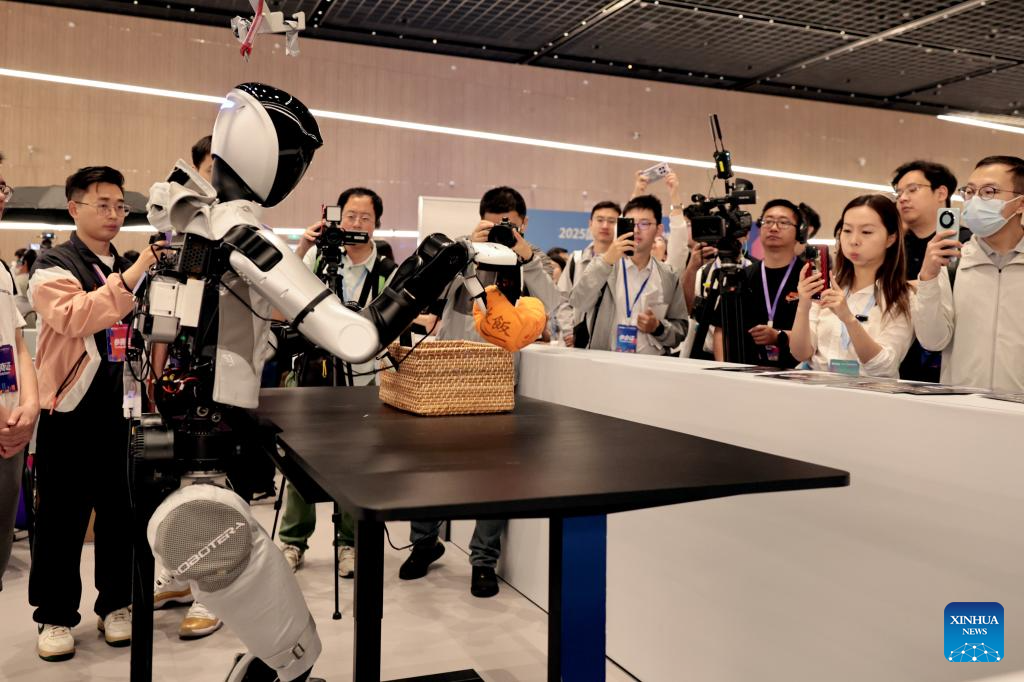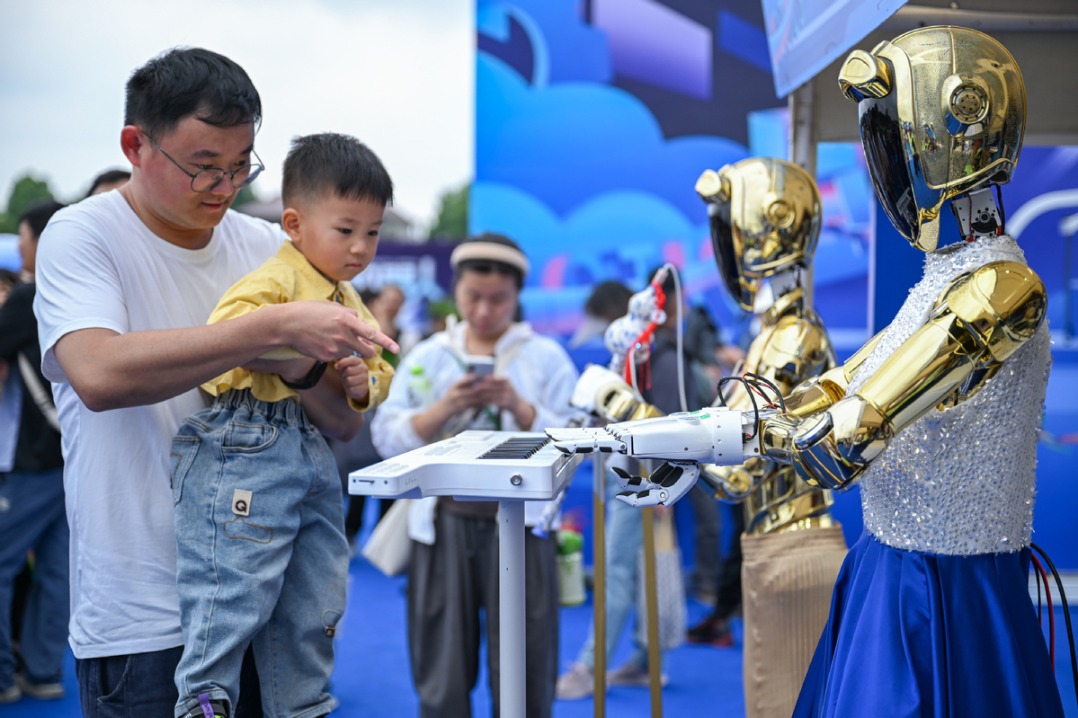Experts analyze role of humanoid robots in future


An increasing number of humanoid robot sports events, ranging from a half-marathon in April to a combat tournament recently, have been held across China, highlighting the industry's rapid development while sparking debate about its technological direction.
The humanoid robot half-marathon in Beijing drew dozens of domestic robot companies, research institutions and universities that showcased their robotics technology. Despite some robots impressively crossing the finish line, several competitors failed to complete the race, with some even falling apart, raising concerns about the real-world value of these humanoid machines.
Later in April, the inaugural Embodied Intelligent Robot Games took place in Wuxi, Jiangsu province, featuring a wider range of robotic sports, including soccer.
At the CMG World Robot Competition — Mecha Fighting Series recently, audiences were amazed by the robots' ability to rise from the floor after being knocked down. The world's first combat tournament featuring full-sized humanoid robots is also set for December in Shenzhen, Guangdong province.
Humanoid robots have emerged as a hot topic in the tech sector this year, fueling debates over whether they need to strictly adhere to humanlike forms. Some industry experts argue that the robots are still at the performance stage and not yet ready to provide the real productivity needed in factories.
Fu Sheng, chairman and CEO of Cheetah Mobile, said robot applications should prioritize transitioning from industrial scenarios to commercial services, ultimately integrating into households.
"It's important to let robots enter standardized and relatively singular-task industrial manufacturing scenarios, such as automobile assembly lines, 3C electronic equipment and logistics," he said. "In a modern factory, most positions can be fulfilled by devices such as robotic arms, which don't necessarily require complete humanoid forms or even legs. Mechanical arms can work tirelessly 24 hours a day."
Similarly, at the closing ceremony of the 5th BEYOND International Technology Innovation Expo, Joe Tsai, chairman of Alibaba Group, said the intelligence level of current humanoid robots is still far from that of humans, with significant technological barriers remaining.
"There's still lots of work to do to further promote the development of the robotics industry," he said.
Despite these reservations, experts say there are compelling reasons for favoring humanoid robots.
"Our brains are better at processing signals that resemble humanlike communication," said Zhang Lihua, vice-dean of Fudan University's College of Intelligent Robotics and Advanced Manufacturing.
Within the industry, many believe that humanlike forms are the ultimate state of robots due to their advantages, said Wang Xingxing, founder of Unitree Robotics, which produces humanoid robots.
Humanoid robots can better adapt to the environment and tools of the human world, Wang said. Compared with nonhumanoid robots, they look and behave like humans, making users feel more familiar and trusting — an advantage in services and household applications.





































